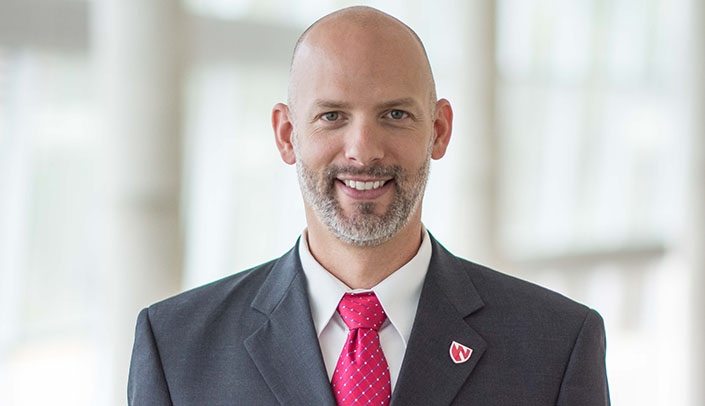Brad Corr, DPT, calls it a “Gordian knot.”
In treatment outcomes seen in adolescents with cerebral palsy (CP), some have vast improvements in their mobility after physical therapy treatment, while others are what Dr. Corr calls “non-responders.”
With the help of a new RO1 grant, Dr. Corr and principal investigator Max Kurz, PhD — along with their lab — are beginning a five-year project that will explore whether there is a neurophysiological component that could explain the difference in outcomes.
NIH funding
This grant is one of two that the Munroe-Meyer Institute Department of Physical Therapy was awarded from the most recent National Institutes of Health Pediatric Rehabilitation request for proposals. The two grants, both involving cerebral palsy research, were two of only three grants that were awarded by the NIH for this RFP.
The lab expects to recruit 60 adolescents with CP for the study.
“This is one of the largest clinical trials that we’ve had funded in the lab,” said Dr. Corr, who will be co-investigator on the grant.
The study will begin with baseline brain imaging and mobility tests. The key to the mobility component is that measurements are being taken in real-world situations.
“We know that individuals will change they way they walk when people are watching or when in a clinic — they are essentially trying to perform,” Dr. Corr said. “We now are using technology to be able to capture movement out in the real world, an outdoor course that participants will walk for time and also for motion kinematics.”
The baseline brain imaging will determine how the brain reacts to baseline movement or stimuli.
After completing the baseline tests, participants will undergo therapeutic gait training protocol. Following the treatment program, the original baseline assessments will be compared to new brain images.
“We know the brain imaging can change following intervention, but are there things about some people that make it change more than other people?”
Exploring how physical therapy affects brain function has been an emphasis of Dr. Kurz’s lab for many years. The new study, however, is unique in its focus on ‘responder’ vs. ‘non-responder’ data, Dr. Corr said.
“We are trying to identify if there are specific characteristics in the individuals who respond to this type or therapy that are different than those who do not. We all learn differently or have different strengths in the way we learn, so if we can identify key characteristics in individuals, we might be able to determine what therapy or intervention would most benefit a particular individual.”
“We are passionate in this lab, this department and this institute about how movement and your motor abilities affect your ability to do what you want to do in life,” Dr. Corr said. “Using physical therapy interventions to challenge people to take on tasks they are not necessarily very comfortable with, makes them more skillful and also hopefully can change the way they view themselves, their abilities, and their ability to take on and solve challenges.”

Congratulations Brad and Max. Well deserved.